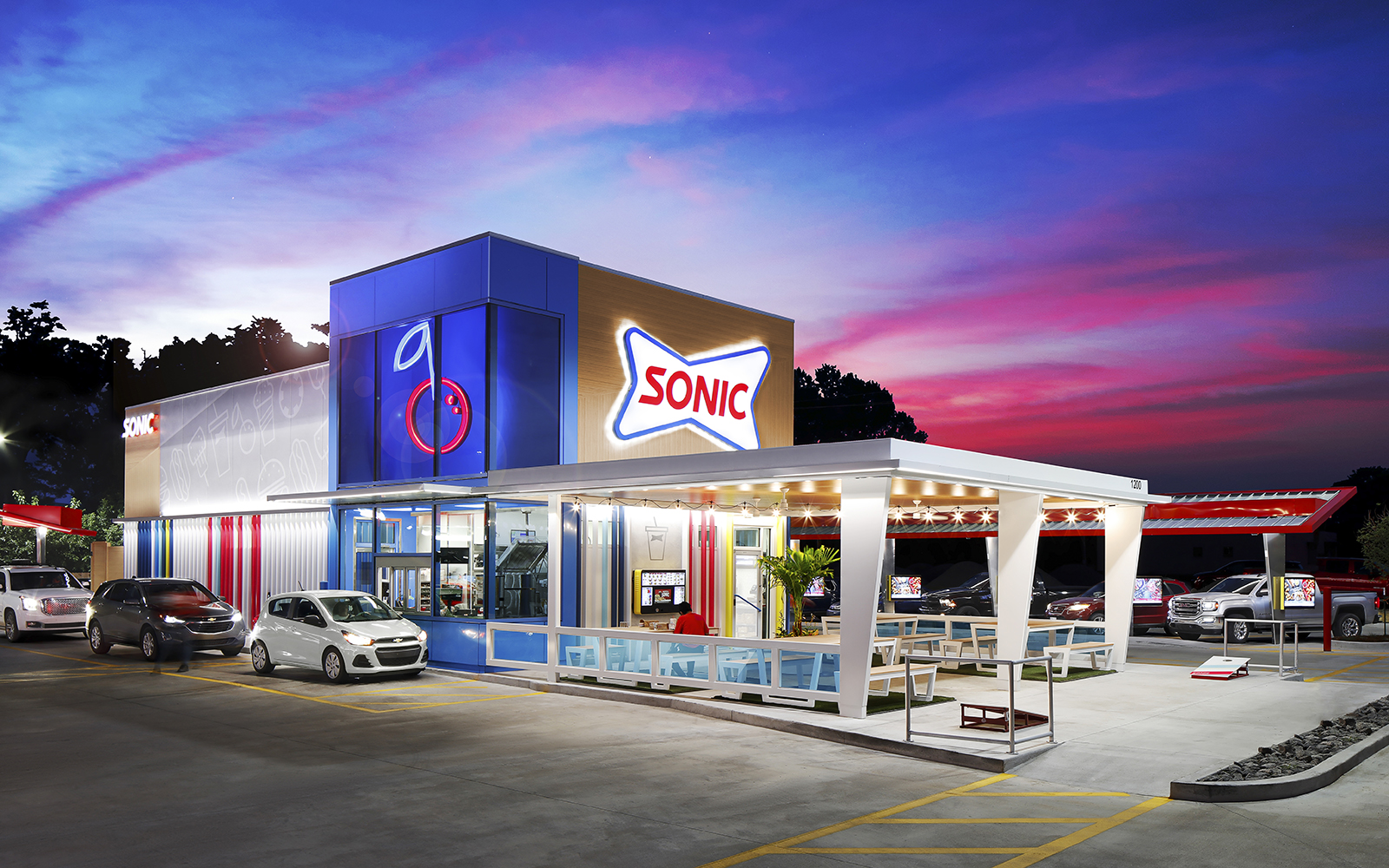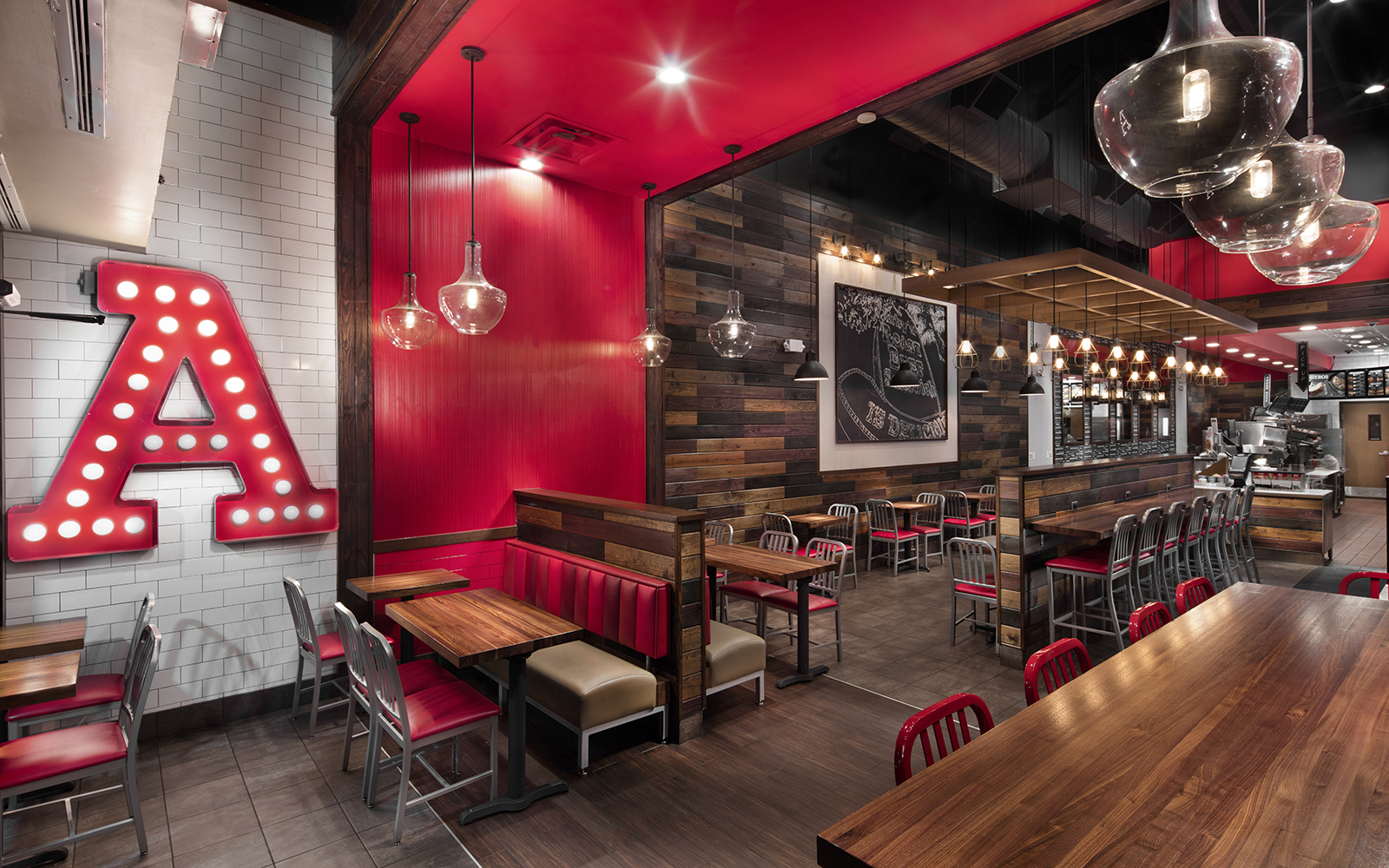|
Getting your Trinity Audio player ready...
|
To consumers of meals from quick service restaurants (QSRs), the experience is all about simplification. There’s no need to grocery shop, to cook, to even know a recipe in the first place, and there are no dishes to wash later. The meal is ready to eat in a matter of minutes. But spend a few minutes talking to Michael Landru, director of real estate for Inspire Brands, and you learn where the work happens. Those simple-to-get, simple-to-eat meals come to us from a very complicated environment.
COVID-19 made it even more complex. But for the two brands that Landru works on, Sonic and Arby’s, circumstances in the pandemic became a driver of an increase in business, as well as a shift in how new and future restaurants are being built.
“Inspire had acquired the Sonic brand in early 2019, and to be honest, the real estate team hadn’t fully engaged with it prior to COVID,” Landru says. “Other drive-through brands were doing well, but it was in late 2020 when we realized we had one of the most socially distanced concepts of all.”

Sonic was established in the 1950s as a very mid-century concept of the car-hop service. From an intercom device in a car parking stall, diners would place orders and, a few minutes later, a restaurant crew member would roller-skate to them with their meals. It was popular and certainly fun for diners and workers alike, and while other restaurant chains migrated to inside dining and drive-throughs, Sonic kept the concept with a bit of modernization (you can now preorder on a phone app, for example). The retro experience is currently available at most of the chain’s 3,550 locations in 46 US states.
As it turned out, this contactless method was ideal in a world where diners remaining in their own space, their cars, was much preferred. It might seem a lot like the drive-through order, pay, and pickup process customers find at thousands of other QSR brands. The difference is customers can sit in their cars for a bit while they eat instead of driving away while their food cools on the seat.
There are multiple factors people like Landru work on to ensure restaurant success. That includes land acquisition that can accommodate the flow of traffic required for smooth operations. Also, while the Sonic experience is largely about in-car dining, the Sonic units have between 20 and 60 seats available for inside dining and another 16 outside, in addition to a drive-through. Landru also oversees architectural design to fit the site, zoning questions, and permitting to accommodate utilities and traffic, contracting, and construction.
The real estate director says from start to finish the completion of a new Sonic location can take between 18 and 24 months. “Longer in the higher-population areas,” he adds. “City planners are busy in those places, so a backup can take many weeks.” Supply chain issues, plaguing the entire economy, adversely affect restaurant building as well.
But it’s hard to imagine any of this business in more competent hands. Landru has been in restaurants for decades, starting at age 15 as a restaurant busboy and short order cook. “It was a breakfast, lunch, and dinner place with 100 seats,” he reminisces. “It was run like a military operation, with everything made from scratch.” He worked there through high school and college, sometimes opening it up at five o’clock in the morning. He says that’s where he fell in love with the restaurant industry.
Landru initially worked in commercial real estate. He then was recruited into a regional development position with Little Caesars pizza chain, where he helped build 2,200 restaurants. Next, he worked as a real estate developer for four years, then tried his hand at owning and operating two pizza restaurants. After selling them, he returned to unit development for Einstein Bagels and Boston Market, then reverted to commercial real estate development before moving on to franchise development for Marco’s Pizza chain. Next, he ran a commercial real estate development company, and since 2016 has been with Inspire.

That is quite a series of important jobs that are mostly in the restaurant business. And when asked about his career, he answers that he simply loves his work. “I’m a deal junkie,” he jokes. “I love the groundbreaking, when it’s built, and when it finally opens.” But, he adds, the real satisfaction comes when sales take off.
As the industry continues to deal with COVID and post-COVID conditions, Landru has his hands full with high growth amid supply chain and labor shortage challenges. Add to that the bifurcation of customers between those who are app-friendly and those who like to order their food by traditional means. He expects it will take 10 to 15 years before everyone orders on their phones.
Restaurants are changing fast. Operational automation will reconfigure kitchens, and in-store dining is shrinking while drive-through and third-party delivery services (GrubHub, Uber Eats, etc.) enable Arby’s, Sonic, and other Inspire Brands businesses to compete and grow.
Landru is particularly excited about prefabricated buildings, including reused shipping containers, that revolutionize the construction process. “It can shorten build times and control costs,” he says. Of course, to consumers, all of this is invisible when what they want is a tasty meal, available in just a few simple minutes.
But to Landru, at this point in his 40-year career, such shifts add complexity, and he’s continuously excited for what will be the next big thing.


